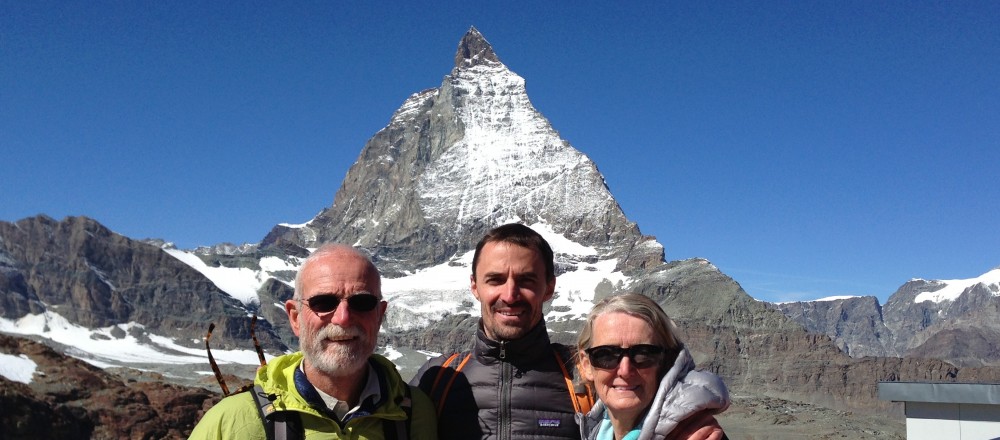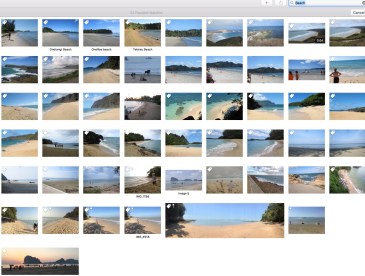
Lots of mention in this Blog about UltraLight backpacking, but the core philosophy is packing light and making clothing and gear work for multiple uses.
 Packing light seems smart, intuitive, and sensible, but after watching countless tourists and travelers tote and carry humungous roller bags and huge backpacks (some also with daypacks on their chests), or try to stuff oversized carry-on bags into airline compartments, it’s worth a rant on packing light. We travel for 3 weeks with less than 14 pounds and for 4 months with less than 25. All of this in a day pack.
Packing light seems smart, intuitive, and sensible, but after watching countless tourists and travelers tote and carry humungous roller bags and huge backpacks (some also with daypacks on their chests), or try to stuff oversized carry-on bags into airline compartments, it’s worth a rant on packing light. We travel for 3 weeks with less than 14 pounds and for 4 months with less than 25. All of this in a day pack.
Core Principles:
- Weigh every item
- Keep a list of item weights
- Make each item serve multiple purposes
- Plan to hand wash items that will dry overnight
- Shop with weight in mind
- Choose a bag for comfort and convenience not one to fit everything into
- Roll your clothing
- Compartmentalize your gear
- Keep in mind you can wear the same outfit every day
- Take a photo of your “pile” before you pack for future reference
 One of the best techniques for Packing Light of course is a kitchen scale. Available from Walmart to Amazon for less than $20, you can know empirically which of your items weighs less than another and worth packing.
One of the best techniques for Packing Light of course is a kitchen scale. Available from Walmart to Amazon for less than $20, you can know empirically which of your items weighs less than another and worth packing.
Of course, unless your memory is photographic or you indelibly mark (like children’s camp clothing) the weight on each item, you’re going to have to write it down. You can be compulsive like me and keep an excel spreadsheet, or on the back of a junk mail  envelope like your passwords. There are even apps for logging your gear. The main thing is write it down. Choosing between two tops or shirts becomes much easier when you know the which one is lighter.
envelope like your passwords. There are even apps for logging your gear. The main thing is write it down. Choosing between two tops or shirts becomes much easier when you know the which one is lighter.
Mixing and matching is touted by all the fashion cognoscenti, why not make your travel choices work together, with gear as well as clothing. One example might be an iPad that can be used for reading, travel guide, internet, email, movies, camera, showing photos of “home”, blogging and notes. We’ve loaded Lonely Planet & Swiss hiking guide books in Kindle App so that we don’t carry those thick and heavy tomes in our load. Zip-off pants can serve as long pants for churches or shorts for warmer weather. Believe it or not, Merino Wool base layer shirts can work in cold and warm weather. If you try IceBreaker for example I’ll guarantee you won’t care whether it’s Norway or Moab.
 We plan on hand-washing most of our clothing while traveling, so that means selecting items that are typically wrinkle-free, will wring out easily and dry fast. Cotton t-shirts don’t fit in that category. A simple short sleeved collared cotton shirt will dry much faster than a t-shirt, will upgrade your casual appearance and store smaller. All these shirts and pants on the left fit in my day pack, along with plenty of other gear for a multi-month trip. All our choices can be washed in a bathroom sink (with hand soap) and dried overnight. Wool socks can be the only difficultly in cold climes and wringing them out inside a towel will extract most of the moisture before you put them next to a heater. Two pairs will allow for a 2nd day’s drying time. We’ve even slept on the damp socks overnight to completely dry them.
We plan on hand-washing most of our clothing while traveling, so that means selecting items that are typically wrinkle-free, will wring out easily and dry fast. Cotton t-shirts don’t fit in that category. A simple short sleeved collared cotton shirt will dry much faster than a t-shirt, will upgrade your casual appearance and store smaller. All these shirts and pants on the left fit in my day pack, along with plenty of other gear for a multi-month trip. All our choices can be washed in a bathroom sink (with hand soap) and dried overnight. Wool socks can be the only difficultly in cold climes and wringing them out inside a towel will extract most of the moisture before you put them next to a heater. Two pairs will allow for a 2nd day’s drying time. We’ve even slept on the damp socks overnight to completely dry them.
Of course buying and owning lightweight, wrinkle-free, fast drying clothing is best. The biggest objection to ultralight backpacker wannabes is the cost of outfitting, but if you just keep in mind with every new or next acquisition the UL or Lightweight requirements, you’ll have what you need in the matter of a few years, if not a couple of trips or birthdays.
First thing to learn in the UL world is don’t believe the advertising, sale person or marketing when it comes to their concept of “lightweight”. I once had a reputable backcountry salesman tell me his bivy sack (a nylon tube for your sleeping bag) was ultralight and it weighed more than my 2-person tent. Check the specifications, bring a scale to the store or keep the sales slip and weigh it after you get home.
We use Osprey day packs, Talon 22’s (top photo) or an older 24-liter pack. Hard to believe but you can get enough for a 21-day trip including electronics in easily. Stanna even takes three pairs of shoes (two pairs in the pack, one pair on her feet). Below is the photo of my clothing and gear for our latest 21-day hiking trip to Switzerland. Plenty for air travel, eating in good restaurants, and hiking in mountains with snow.

 As you can see, I learned from the days of the airline “stewardess” that the most efficient way to pack is to roll your clothes. Using a velcro strap is the OCD version of rolling. In addition, we compartmentalize our load with Eagle Creek Cubes which help to compress the load and slide easily in and out of the packs.
As you can see, I learned from the days of the airline “stewardess” that the most efficient way to pack is to roll your clothes. Using a velcro strap is the OCD version of rolling. In addition, we compartmentalize our load with Eagle Creek Cubes which help to compress the load and slide easily in and out of the packs.
Give it a try on your next trip, whether flying to Europe, Asia or your next high country overnight. Once you start thinking lightweight the trips will become easier and you’ll be wondering why tourists have a rolling mini-trunk behind them or that young traveler needs that tortoise-sized pack on his back plus the day pack in front.

 We managed one more 4-Day trip to the desert the last week of October. All three of us were eager to test some new gear and enjoy the end of our Indian Summer here in the Southwest. The Utah desert is very popular this time of year and securing a backcountry hiking and camping permit is difficult in the Canyonlands National Park.
We managed one more 4-Day trip to the desert the last week of October. All three of us were eager to test some new gear and enjoy the end of our Indian Summer here in the Southwest. The Utah desert is very popular this time of year and securing a backcountry hiking and camping permit is difficult in the Canyonlands National Park. We learned in Spring that we could come into the very bottom of the National Park (green shading) as day hikers, by entering and exploring the Butler Wash Wilderness Study Area directly south of the park. This area is some of the finest desert wilderness and deserves it’s special designation.
We learned in Spring that we could come into the very bottom of the National Park (green shading) as day hikers, by entering and exploring the Butler Wash Wilderness Study Area directly south of the park. This area is some of the finest desert wilderness and deserves it’s special designation.  The only footprints in the four days were deer, bear and bobcat (excluding the day hikes deep into the National Park where we only saw one set of human prints). Water sources are the primary reason no one goes into this region, but we’ve now scouted and recorded a number of water holes. Our trip itinerary is dependent on finding adequate water and each time we’re able to explore new canyons and routes until we run low and have to backtrack.
The only footprints in the four days were deer, bear and bobcat (excluding the day hikes deep into the National Park where we only saw one set of human prints). Water sources are the primary reason no one goes into this region, but we’ve now scouted and recorded a number of water holes. Our trip itinerary is dependent on finding adequate water and each time we’re able to explore new canyons and routes until we run low and have to backtrack. Because we’ve seen numerous bear tracks and scat in the drainages that we travel and camp, we always hung our food.
Because we’ve seen numerous bear tracks and scat in the drainages that we travel and camp, we always hung our food.

































































